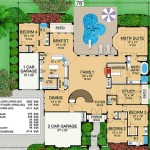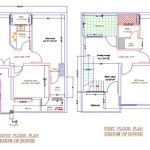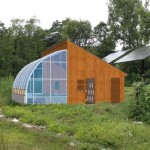Small Japanese Home Plans: A Guide to Efficient Living
Japan, a land known for its dense urban environments and limited living spaces, has cultivated a rich tradition of small home design. Japanese homes, often referred to as "kyoto" or "machiya," are renowned for their functionality, aesthetics, and efficient use of space. They are not merely compact but are meticulously crafted to maximize comfort and liveability within a smaller footprint.
Small Japanese home plans are gaining popularity worldwide, inspiring homeowners seeking to embrace minimalist living and optimize their spaces. These designs offer a unique blend of functionality, aesthetics, and adaptability, making them ideal for various lifestyles and needs.
Key Features of Small Japanese Home Plans
1. Minimalist Design: Embracing Simplicity
Japanese home designs prioritize simplicity and functionality, minimizing clutter and maximizing the use of every square inch. The focus is on essential elements, creating a sense of openness and serenity. This approach is evident in the use of clean lines, natural materials, and a limited color palette. Minimalist design promotes a sense of calm and order, enhancing the overall living experience.
The concept of "wabi-sabi" is deeply ingrained in Japanese aesthetics and influences home design. Wabi-sabi emphasizes the beauty of imperfection and impermanence, valuing simplicity and understated elegance. This philosophy is reflected in the use of natural materials with their inherent variations and the acceptance of aging and patina as part of the design's charm.
2. Multi-Functional Spaces: Maximizing Versatility
Small Japanese homes are designed to be flexible and adaptable, with spaces serving multiple purposes. For instance, a single room might transform from a living room into a dining room or even a temporary bedroom. This versatility is achieved through clever use of furniture and built-in features such as sliding doors, tatami mats, and modular storage systems.
Japanese home plans often incorporate "shoji" screens, which are movable translucent panels that can divide spaces and create different atmospheres. These screens can be used to create a sense of privacy or openness as needed, ensuring flexibility and adaptability. The use of tatami mats, traditional floor coverings made from woven rush, further enhances the multi-functionality of spaces by providing a comfortable and versatile surface for seating, sleeping, and even dining.
3. Outdoor Integration: Connecting with Nature
Japanese home designs prioritize a strong connection to nature, incorporating outdoor spaces into the living environment. Even in small homes, patios, balconies, or gardens are designed to create a sense of tranquility and bring the outdoors in. This connection to nature is crucial in Japanese culture, emphasizing harmony and balance with the natural world.
The use of natural materials like wood, stone, and bamboo further enhances the connection to nature. These materials not only provide a sense of warmth and comfort but also contribute to a sustainable and eco-conscious approach to home design. The incorporation of plants and greenery within the home further strengthens this bond with nature, creating a calming and refreshing atmosphere.
Benefits of Small Japanese Home Plans
Small Japanese home plans offer numerous benefits beyond their aesthetic appeal.
These designs promote sustainable living by minimizing energy consumption and material usage. The compact size reduces heating and cooling needs, while the use of natural materials further contributes to environmental responsibility. Moreover, the emphasis on minimalism encourages a less consumerist lifestyle, reducing waste and promoting mindful living.
Small Japanese homes are also incredibly affordable to build and maintain. The efficient use of space and materials translates into lower construction costs. Furthermore, the simplified design requires less cleaning and upkeep, reducing overall maintenance expenses. Choosing sustainable materials further contributes to long-term cost savings.
Small Japanese home plans are a testament to the ingenuity and practicality of Japanese design principles. These homes, though compact, offer a comfortable and functional living environment, prioritizing simplicity, efficiency, and a strong connection with nature. As global trends lean towards minimalist living and responsible design, small Japanese home plans continue to inspire architects and homeowners alike.

The Floor Plan Of Apartments In Japan Japanese Home Archi Designer

Traditional Japanese House Home Design

The Floor Plan Of Apartments In Japan Japanese Home Archi Designer

Japanese Small House Plans Pin Up Houses

Guide To Japanese Apartments Floor Plans Photos And Kai Keywords Blog

Hiyoshi House A Small Simple Home By Eana Japanese Design

What Do Japanese Apartment Layout Terms Mean

Typical Home Layouts Differences Between Japan And Abroad

Japanese Architecture Prefab Homes Tree House Busyboo Modern Japan Plan

Apartment Sizes And Floor Plans In Japan Tokyo Portfolio Real Estate








